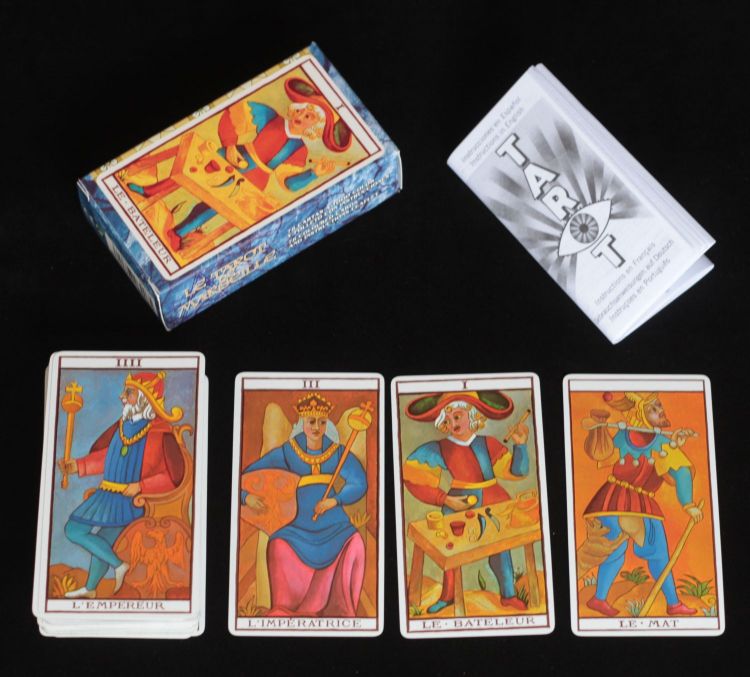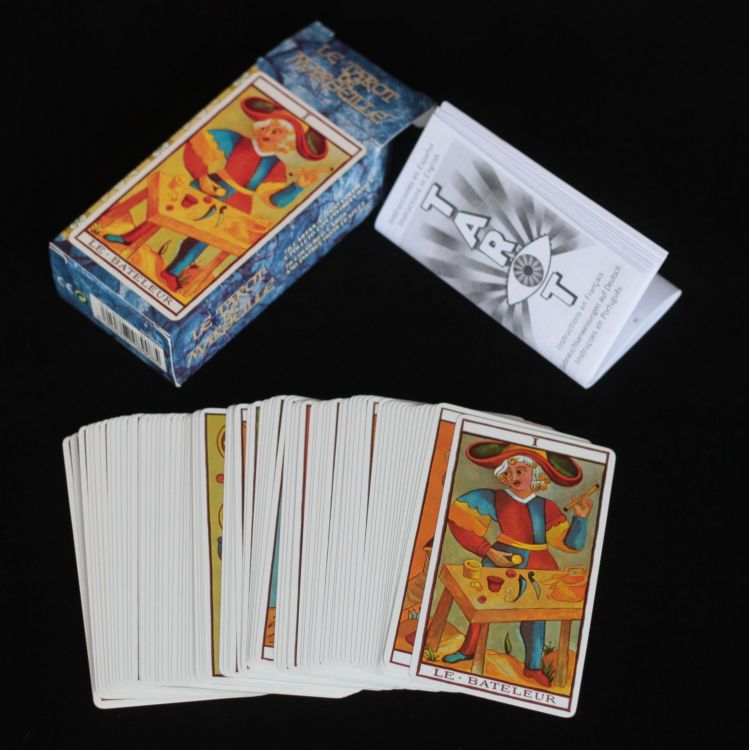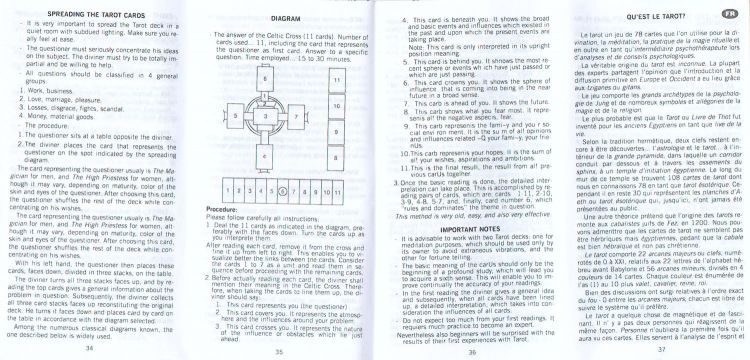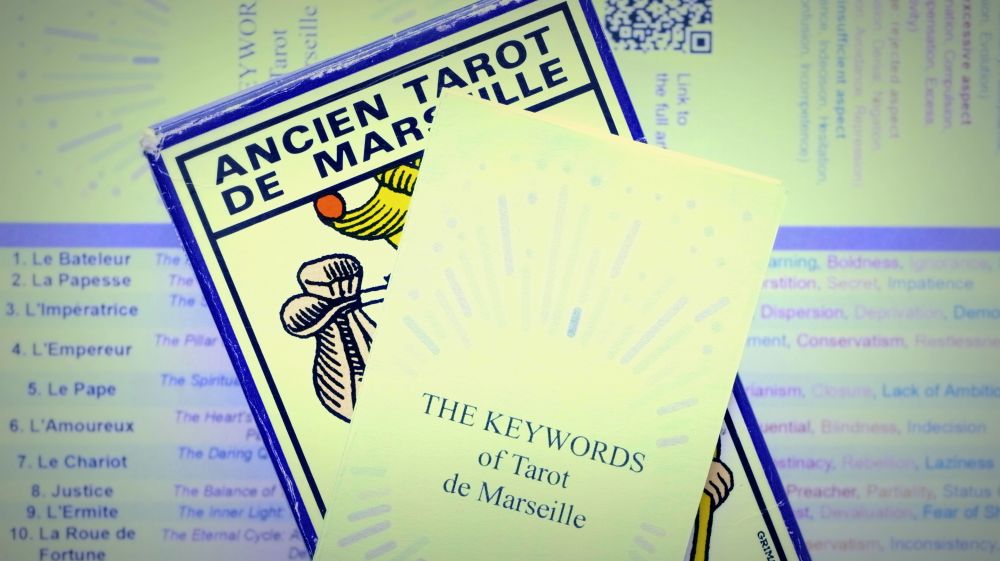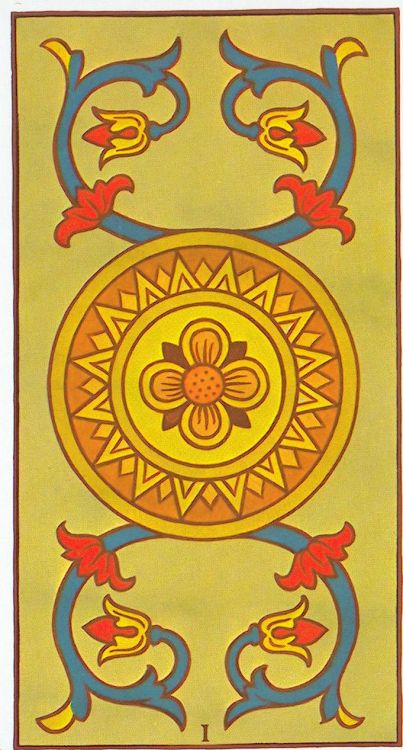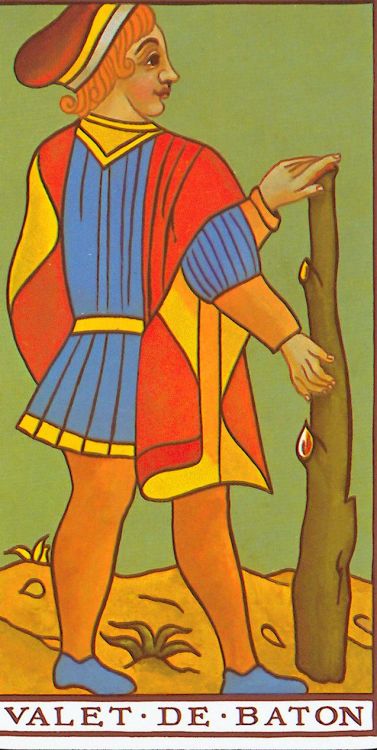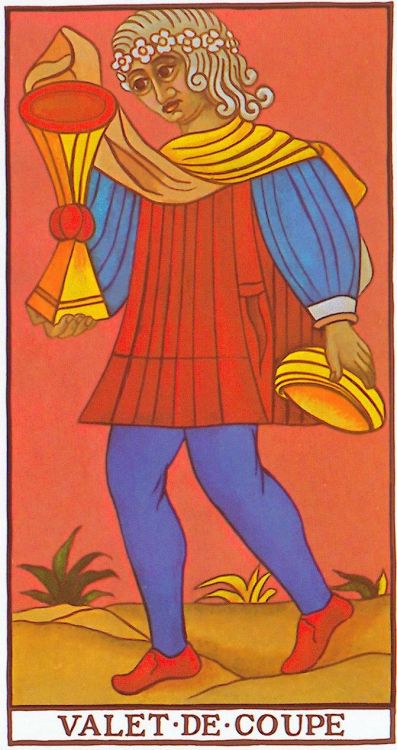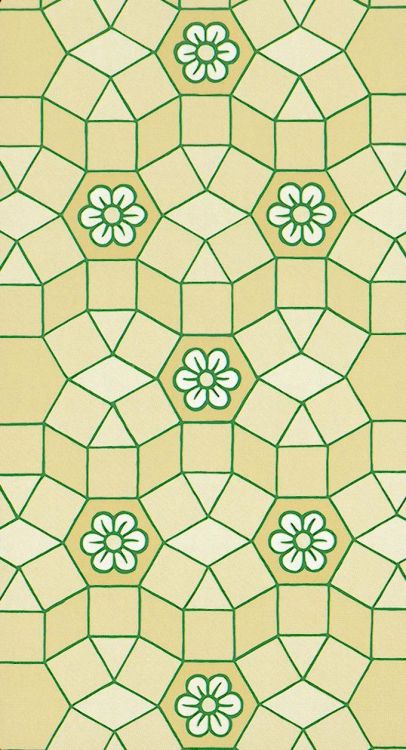vérifier de quel tarot est censé s'inspirer pous les dessins le fournier : le marteau ou le conver ?
deplacer ou non le parapgraphe "Quelques libertés par rapport à la forme canonique"
plusieurs langues
liste des tirages
taille des cartes
lien vers grimaud. lien vers conver.
The Fournier tarot is thus clearly a copy of The "Ancien (Old) Tarot of Marseille" by Paul Marteau whose colors have been reworked. Rightly, the Spanish publisher has given the opportunity to its collaborators to bring up to date
a tarot which marked an era and the spirits, but also fell into obsolescence because of its very limited palette of 5 colors.
The result is rather successful. This tarot is probably a good choice for a beginner, pleasant to look at in its form, and quite respectful of the tradition in its substance. In a similar vein, the Universal Tarot by Bruno de Nys, which also chose very modern colors and illustrations, offers, on the other hand, deeply reworked scenes (as creative as a Rider-Waite-Smith tarot can be) and therefore much less respectful of the standard.
The confirmed practitioner knows that Paul Marteau's tarot has some inaccuracies compared to the canonical form (few details in truth but that it is good to know). Fournier's tarot has these same approximations but this changes very little or not at all the divinatory interpretation of the cards. The tarologist will be able to read with this tarot of Marseilles in order to propose current illustrations to his consultant.
To learn more and deepen your knowledge of tarot, check out my article on the meanings of the 78 tarot cards or on the 22 Trumps (major arcana).
